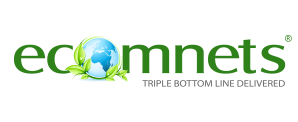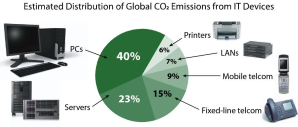Monthly Archives: September 2011
The Four Pillars of Green IT!
The Four Pillars of Green IT!
How governments and corporations can become more energy efficient in IT!
Many organizations are now coming into focus with Green IT. We have moved away from the original idea that all computing is Green because it is all online or inside a computer. Just because it is paperless, doesn’t mean there is no room for improvement on environmental and energy efficiency. Believe it or not, three years ago, I heard this from information technology engineers when they queried me about Green IT. Green IT is energy efficient computing from the desktop to the data center, from hardware to software, from the network to the virtual cloud. There are four core areas of competency, all equally important. I will construct the pillars in order of importance, based on my own beliefs.
Pillar #1 – Carbon Accounting & Management
You will hear this statement used over and over incorrectly, but for this purpose, it is correct. “You cannot improve on what you cannot measure.” Compliance issues and environmental key performance indicators dictate that organizations must measure their carbon footprint. As corporations look to gain market share I their vertical market, it is becoming increasingly important to look good on the Dow Jones Sustainability Index, Global 1000 Sustainability Index, and many others…
- 2011 Global 100
- Dow Jones Sustainability Index
- Carbon Disclosure Project
- Global Reporting Initiative
- Global 1000 Sustainable Performance Leaders
Pillar #2 – Cloud Computing | Consumerization of IT
Many organizations have not fully realized the benefits of Cloud Computing to an organization. There are several reasons for this, including: job security, trust, hype, and past performance. Many IT executives are wondering what will happen to all the IT jobs within their organization. I say, repurpose the IT staff for more strategic work besides break/fix maintenance and email. Not trusting the service provider is quite understandable, but just like a good employment search, you must do a good provider search. The one good thing about a reputable cloud service provider is the Service Level Agreements (SLAs). If your in-house IT staff screws it up, you have to pay their salary until they fix it, unless they cannot fix it. The consequences of firing someone in this economy are paying unemployment benefits, and paying recruiting costs to replace them. If the service provider gets it wrong they have to agree to the terms of the SLA.
What workloads should be consumed by cloud computing? In my most humble and accurate opinion, email and computers should be consumed by cloud computing. Why on earth would I want to keep my highly paid IT staff working on common workplace services like email and desktop computers, when that type of work can be done more efficiently with a cloud provider? Let’s say that you’re an older organization running Lotus Notes and you want to migrate to Microsoft Exchange, or you just want to manage an existing Microsoft Exchange Platform. Why bother? Move that email to the cloud. Focus on more strategic things.
Computers-as-a-Service (CaaS) is starting to gain ground these days. Bypass the in-house desktop virtualization projects and focus again on more strategic issues. I think we’ve been doing business long enough to know that there are core software programs that everyone uses. In some cases, it is worth paying $100/month per desktop computer for core applications. I remember talking to the world’s largest credit union about break/fix maintenance. They have 60 people dedicated to break/fix maintenance on computers.
EcomNets has developed so Cloud Services in the form of Cloud Documents, Managed Hosting, Managed Storage, and Disaster Recovery in our Danville Green Data Center. http://www.ecomnets.com
Pillar # 3 – Data Center Energy Efficiency
Many organizations start with the data center, which is understandable, but when you offload to the cloud, your data center will have changed slightly. If you work on my cloud initiatives first, you can consolidate your data center, even more. Data Center Consolidation is the most popular area for CIO’s to focus on. There are many reasons:
- Data Centers Design has become more efficient.
- Data Center Energy Consumption has been doubling over the last decade.
- Organizations cannot afford to ignore the expense of the data center.
- Virtualization has promoted more density within the data center.
There are many tools on the market to help data center managers get a handle on data center energy consumption and performance. If you have a data center efficiency project in the works I suggest that you look at Joulex and/or Power Analytics for help. These tools can monitor more than just IT equipment, they can also manage the facilities equipment.
Pillar #4 – Enterprise Energy Efficiency
The Enterprise Energy Efficiency pillar is the most overlooked aspect of Green IT, but has more efficiency gains than any other pillar. The reason for this is based on assumption and appeal. Many IT executives believe that the data center is the biggest carbon producer, and in some cases it that would be correct. In many instances with large organizations, that would be incorrect. PC Power Management can reduce up to 40% of carbon emissions of all IT equipment. Imagine deploying JouleX for the entire enterprise, and it can turn down PCs, Servers, Printers, Network Devices, Copiers, and Phone Systems, which can get you up to a 91% carbon reduction. In addition, we have telework, green printing solutions, and electronic filing solutions, and electronic waste management programs that can increase reduction of carbon footprint.


